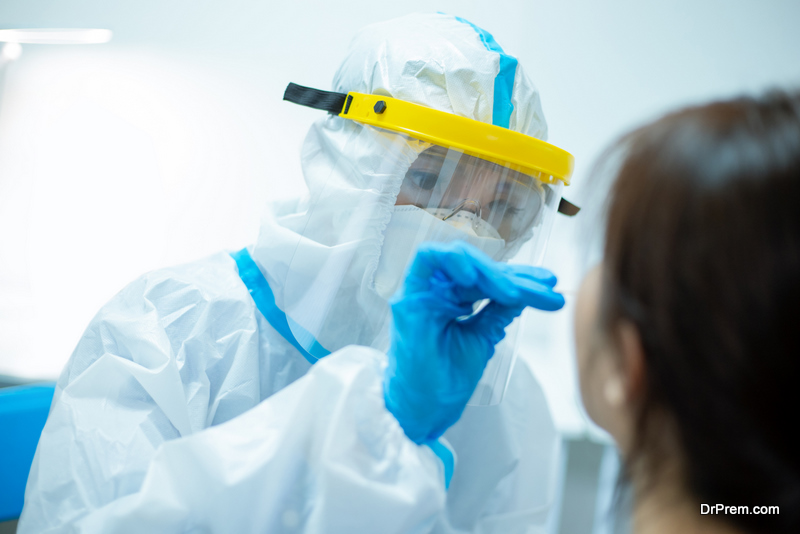The coronavirus pandemic has caused health care providers worldwide to make adjustments. From education to PPE, it’s evident that doctors and administrators are focused on new changes for their practices. Thus, we’ve seen many adaptations and innovations due to COVID-19. How have health care providers learned to evolve?
Take a look at various methods and innovations that health care providers have employed in light of COVID-19.
1. Changed Educational Practices
 These days, it’s almost like everywhere you turn has information on COVID-19. When you search “COVID-19” on Google, you’re met with local maps and articles which give you an insight into what’s recently changed. It’s evident that many health care providers have taken a similar approach. They’ve concentrated on public education as a priority for their pandemic approach.
These days, it’s almost like everywhere you turn has information on COVID-19. When you search “COVID-19” on Google, you’re met with local maps and articles which give you an insight into what’s recently changed. It’s evident that many health care providers have taken a similar approach. They’ve concentrated on public education as a priority for their pandemic approach.
If patients aren’t informed about COVID-19, it’s more difficult for them to take preventative measures. An added page on a website with links to CDC and WHO data is a quick and easy way to ensure your area knows enough about COVID-19. Your staff will likely have answers to most questions, but it’s always helpful to have a place where patients can go to access reliable and relevant information.
2. Added Patient Screenings
Before, you wouldn’t have to do more than schedule an appointment if you wanted to see a doctor. COVID-19 has changed how many health care providers prepare an outside patient for a trip into their office. These pre-screening processes reflect guidelines to determine whether someone has COVID-19. An example would be Mayo Clinic’s virtual COVID-19 self-assessment tool that asks numerous questions.
These pre-screenings may vary from health care provider to health care provider. In any case, they’ll all reference similar points to calculate risk properly. These efforts contribute to an overall safer environment for everyone involved. It’s also easier for health care providers to manage appointments. They won’t have anyone visit for a timeslot unless they’ve gone through various steps. That eliminates backlogs.
3. Increased Access to Telehealth
 Telehealth has existed for a while. That said, it’s only recently become readily available. The demand for telehealth and other virtual care possibilities have grown over these recent months. If you didn’t have to travel to your doctor’s office for an appointment, why would you? There are various benefits to online care for those who are at risk for more serious issues, like mental health relapses, as well.
Telehealth has existed for a while. That said, it’s only recently become readily available. The demand for telehealth and other virtual care possibilities have grown over these recent months. If you didn’t have to travel to your doctor’s office for an appointment, why would you? There are various benefits to online care for those who are at risk for more serious issues, like mental health relapses, as well.
It’s clear that telehealth provides many pluses for both patients and doctors. Unfortunately, it’ll probably be many months before rural communities can access these developments. Those who don’t have resources to connect their patients to telehealth systems may face obstacles. Additionally, it’s always a struggle for doctors, as well as certain administrators, to perfect new technology.
This advancement makes visits easier for other patients, too. A physician can spend more time with in-person patients because they don’t have as many people to fit into their office. Similarly, they’re able to offer more in-depth care to both virtual and in-person patients since there are limited distractions.
4. New Solutions for PPE Needs
There was a PPE shortage when COVID-19 first surfaced in America. Many companies and businesses have expanded their reach to create and ship PPE to everyone who needs supplies. There have also been advances to help health care providers easily connect with potential manufacturers so that they can cover their bases. The possibilities for innovative technology also extend to gear like ventilators.
Many health care providers have taken steps to reduce PPE needs altogether. Resources like screenings and telehealth reserve PPE for other situations. This way, you don’t use resources too quickly. In the past, you could find PPE without any problems. The COVID-19 situation has forced health care providers to take a more creative and resourceful approach to these instances.
5. Only Offering Essential Care
 It’s important to focus on essential care for in-person patients. Does that individual really need blood work today? These questions help health care providers keep an especially narrow lense. If someone doesn’t absolutely need to travel to their office, it’s not happening. This adjustment makes everyone’s lives easier. Each person is able to receive more personalized care to help them thrive.
It’s important to focus on essential care for in-person patients. Does that individual really need blood work today? These questions help health care providers keep an especially narrow lense. If someone doesn’t absolutely need to travel to their office, it’s not happening. This adjustment makes everyone’s lives easier. Each person is able to receive more personalized care to help them thrive.
While many offices and hospitals will still see in-person patients, it’s in a way that’s calculated. There’s an individual focus that goes into planning visits. There’d likely be a higher risk of COVID-19 for workers and patients if they didn’t take these precautions. As a result, it’s evident that more attention is being applied to health care in a broad manner. These changes make a difference for everyone involved.
Workers and Systems Continue to Make Essential Adjustments
As COVID-19 continues to exist, it’s become increasingly important for health care providers to adapt. From education to equipment, it’s clear that many changes have already surfaced. The future will surely be different as everyone learns to further adjust to a new reality.
Article Submitted By Community Writer




